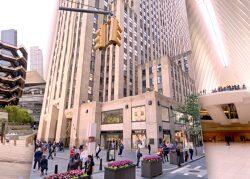Americans still love their stuff.
Overall retail purchases rose 0.7 percent in August, easily beating out the median estimate of a 0.7 percent drop from economists surveyed by Bloomberg. Excluding automobiles, which are hard to get because of a microchip shortage, sales looked even better with a five-month high 1.8 percent rise, according to Bloomberg.
Retail purchases were buoyed by back-to-school purchases being more robust than expected, as many students return full-time to the classroom for the first time in more than a year. The sales were also welcome news for retail landlords given that July data was revised by the Commerce Department to show a 1.8 percent decline in overall retail sales.
Read more


Among the leaders in sales last month were online retailers, general merchandise stores, furniture stores and especially grocery stores, which saw a 2.1 percent increase. Sales at restaurants and bars leveled off last month and sales in the travel and leisure department also struggled, as consumers’ concerns over the delta variant might have caused them to divert some vacation and dining spending to shopping.
The Commerce Department reported sales increases in 10 of 13 sectors. The decreases were in electronics and appliances stores, sporting goods and hobby stores, and car dealers. The latter has had a rough few months: Sales dropped 4.6 percent in July and 3.6 percent in August as they could not get deliveries to meet strong consumer demand.
The overall sales numbers augur well for retail landlords that have struggled through the pandemic. A monthly report from Datex Property Solutions shows that national chains paid 95 percent of owed rent in August. That’s just below a pre-pandemic level of 97 percent during the same period in 2019.
Meanwhile, non-national retailers also saw encouraging rent payments. These retailers paid 89 percent of owed rent last month, just below the 92 percent recorded in 2019.
[Bloomberg] — Holden Walter-Warner
